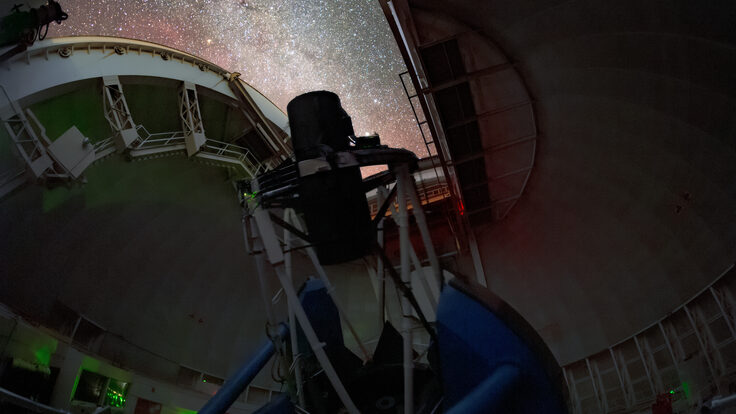
Tevatron repair team: (from left to right) James Williams, Bill Dymond, Scott McCormick, Sali Sylejmani and Dan Lambert
This story first appeared in Fermilab Today on September 29, 2010.
On Friday afternoon before Labor Day weekend, pressure in the Tevatron's cryostat vacuum system suddenly started rising. The Accelerator Division mechanical support team tracked the issue to a faulty rubber O-ring, the part that seals the vacuum between two superconducting magnets.
Placing a new O-ring around the beamline would have required at least a 10-day shutdown to warm up the Tevatron from about minus 500°F, to disassemble the tube, to replace the ring, to complete a full mechanical and vacuum certification of the entire section and to cool it back down. This would have been frustrating for the Tevatron's scientists, who had just ended a scheduled four-week shutdown and were anxious to get back to their experiments.
Accelerator Division mechanical support supervisor Scott McCormick wouldn’t accept such a solution.
"This big machine is four miles in circumference, with a thousand-some superconducting magnets, and one piece of rubber is gonna stop us?" he said. "I don't think so. Not if we can help it."
Four years ago, McCormick and senior operations specialist Dave Augustine had done an experiment testing this exact scenario. During a scheduled shutdown, they removed the clamp from a similar juncture and wrapped the interface in electrical tape. The resulting vacuum held for more than a year. In a real emergency, this would buy them more than enough time until a permanent repair could be made.
So, after much discussion and safety optimization, they decided to try it on the actual leak during the holiday weekend. Four leak detectors, six vacuum pumps, five technicians, one roll of 5/8-inch black electrical tape and a day and a half later, the Tevatron was up and running without a hitch.
"Whenever you are working with a vacuum, there's always an element of risk to the machine," said James Williams, AD senior technician who helped with the fix.

A faulty rubber O-ring threatened to take the Tevatron out of operation for more than a week.
AD run coordinator Cons Gattuso said, "Having the repair only take two days is a big relief when it comes to planning on the run coordination side of things."
Although mechanical failures are much rarer now than they used to be, McCormick said that O-ring failure is likely to occur more often as the Tevatron ages. But even with this solution in hand, the team isn't basking in their success.
"This is our job; it never ends just because we found another solution," McCormick said. "There's always a better, faster, safer way to get us back online."






